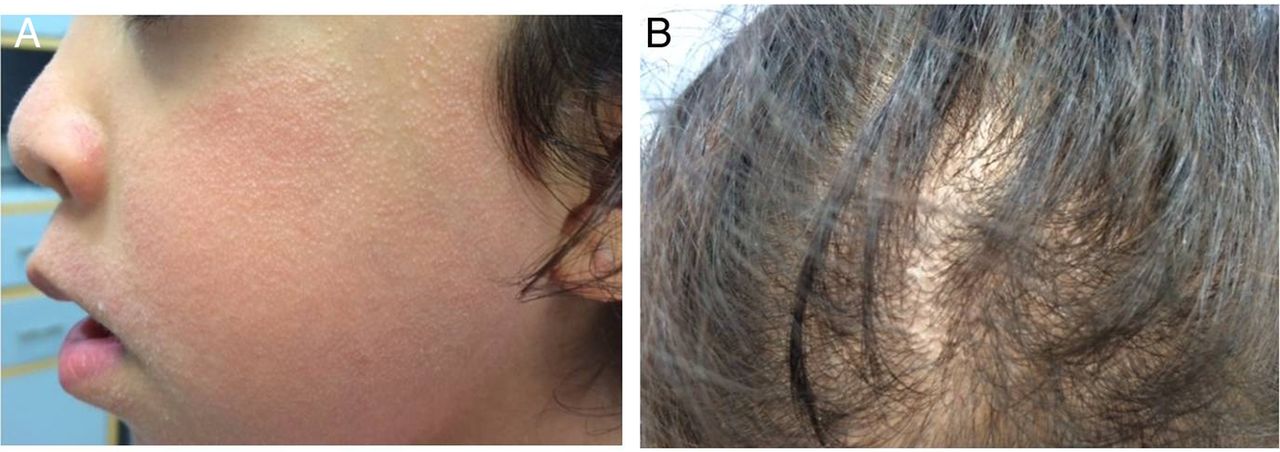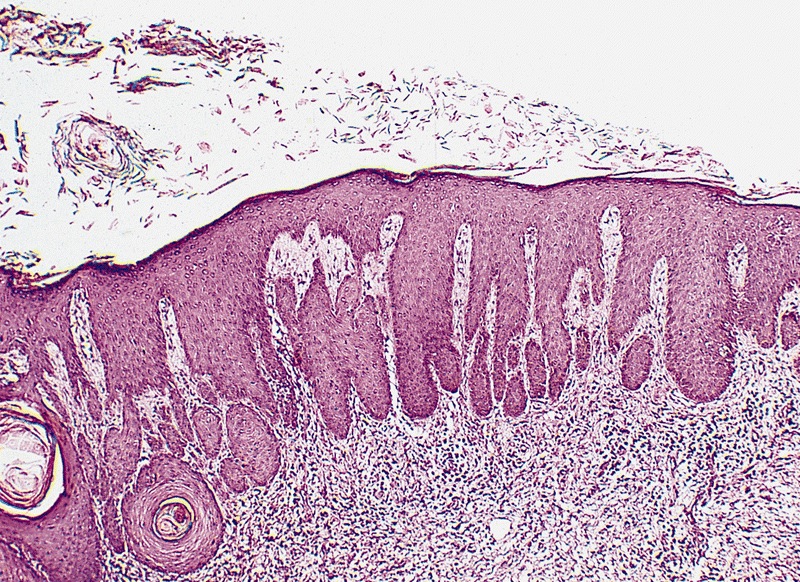Acanthosis Nigricans, often abbreviated as AN, is a skin condition characterized by the development of dark, velvety patches in body folds and creases. These patches are most commonly found in areas such as the neck, armpits, and groin. While it is not harmful on its own, Acanthosis Nigricans can be an indicator of underlying health issues that require attention. This article delves into the causes, symptoms, diagnosis, and treatment options for this condition.

Understanding Acanthosis Nigricans
Acanthosis Nigricans is more than just a cosmetic concern. It is often associated with insulin resistance, hormonal imbalances, and other systemic conditions. Understanding the nature of this skin disorder is crucial to addressing its root cause and managing its symptoms effectively.
What Is Acanthosis Nigricans?
Acanthosis Nigricans is a dermatological condition marked by the thickening and darkening of the skin. The affected areas typically feel soft and velvety to the touch. While it can occur in people of all ages, it is more common in individuals who are overweight or obese. The condition is not contagious, but it can be a sign of an underlying medical issue that needs to be addressed.
Who Is at Risk?
- Individuals with obesity or excess weight
- People with diabetes or prediabetes
- Those with a family history of the condition
- Individuals with hormonal disorders such as polycystic ovary syndrome
- Certain ethnic groups, including African Americans, Native Americans, and Hispanics, are at higher risk
Causes of Acanthosis Nigricans
The exact cause of Acanthosis Nigricans varies depending on the individual and their overall health. In many cases, it is linked to insulin resistance, which occurs when the body’s cells do not respond properly to insulin. However, there are several other potential causes of this condition.
Insulin Resistance
Insulin resistance is one of the most common causes of Acanthosis Nigricans. When the body becomes resistant to insulin, blood sugar levels rise, leading to an overproduction of insulin. High insulin levels can stimulate skin cells to multiply rapidly, resulting in the characteristic thickened and darkened patches of skin.
Hormonal Disorders
Hormonal imbalances, particularly those involving insulin and growth factors, can also contribute to the development of Acanthosis Nigricans. Conditions such as polycystic ovary syndrome, Cushing’s syndrome, and hypothyroidism are often associated with this skin condition.
Medications
Certain medications can trigger Acanthosis Nigricans as a side effect. These include oral contraceptives, corticosteroids, and niacin. If you notice changes in your skin after starting a new medication, it is important to consult your healthcare provider.
Cancer
In rare cases, Acanthosis Nigricans may be a sign of an underlying malignancy, particularly stomach cancer. This form of the condition is referred to as malignant Acanthosis Nigricans and requires immediate medical evaluation.
Genetic Factors
Some individuals may have a genetic predisposition to developing Acanthosis Nigricans. If a close family member has the condition, you may be at a higher risk of developing it yourself.
Symptoms of Acanthosis Nigricans
The symptoms of Acanthosis Nigricans are primarily visible and can vary in severity. Recognizing these symptoms early can help in seeking timely medical advice and treatment.
Dark, Velvety Patches
The hallmark symptom of Acanthosis Nigricans is the appearance of dark, velvety patches of skin. These patches are typically found in body folds and creases, such as the neck, armpits, groin, and under the breasts. The skin may also feel thicker than usual.
Itching or Odor
In some cases, the affected areas may become itchy or develop a foul odor due to excessive sweating and moisture buildup. This can lead to discomfort and self-consciousness, especially if the patches are located in visible areas.
Associated Symptoms
Depending on the underlying cause, individuals with Acanthosis Nigricans may experience additional symptoms such as fatigue, increased thirst, frequent urination, and unexplained weight gain or loss. These symptoms may indicate an underlying metabolic or hormonal disorder.
Diagnosis of Acanthosis Nigricans
Diagnosing Acanthosis Nigricans involves a combination of physical examination, medical history review, and laboratory tests. Since the condition is often a sign of an underlying health issue, identifying the root cause is essential for effective management.
Physical Examination
A healthcare provider will begin by examining the affected areas of the skin. They will look for the characteristic dark, velvety patches and assess their texture and distribution. The location and appearance of these patches can provide valuable clues about the underlying cause.
Medical History Review
Your healthcare provider will ask about your medical history, including any existing conditions such as diabetes, obesity, or hormonal disorders. They may also inquire about your family history to determine if there is a genetic component to your condition.
Laboratory Tests
To identify potential underlying causes, your doctor may order blood tests to check for insulin resistance, glucose levels, and hormone imbalances. Additional tests may be conducted to rule out conditions such as polycystic ovary syndrome or thyroid disorders.
Imaging and Biopsy
In rare cases where malignant Acanthosis Nigricans is suspected, imaging tests such as X-rays or CT scans may be performed to detect the presence of tumors. A skin biopsy may also be conducted to confirm the diagnosis and rule out other skin conditions.
Treatment Options for Acanthosis Nigricans
While there is no specific cure for Acanthosis Nigricans, treating the underlying cause can help improve the appearance of the skin and prevent further progression. The treatment approach depends on the root cause and may involve lifestyle changes, medications, and topical treatments.
Lifestyle Modifications
For individuals with insulin resistance or obesity, making lifestyle changes is often the first step in managing Acanthosis Nigricans. These changes may include:
- Adopting a healthy, balanced diet low in refined sugars and carbohydrates
- Incorporating regular physical activity into your routine
- Achieving and maintaining a healthy weight
Medications
In cases where insulin resistance is a contributing factor, medications such as metformin may be prescribed to improve insulin sensitivity. Hormonal imbalances may be treated with medications that regulate hormone levels, such as birth control pills for polycystic ovary syndrome.
Topical Treatments
Topical treatments can help lighten the darkened patches of skin and improve their texture. These may include:
- Retinoid creams to promote cell turnover and reduce pigmentation
- Hydrocortisone creams to reduce inflammation and irritation
- Alpha hydroxy acids or salicylic acid to exfoliate the skin
Treating Underlying Conditions
If Acanthosis Nigricans is caused by an underlying medical condition, treating that condition is essential. For example, managing diabetes through medication and lifestyle changes can help alleviate the symptoms of Acanthosis Nigricans. Similarly, addressing hormonal imbalances or discontinuing medications that trigger the condition can lead to improvement.
Cosmetic Procedures
In severe cases where the appearance of the skin significantly impacts self-esteem, cosmetic procedures such as laser therapy or chemical peels may be considered. These treatments aim to lighten the skin and reduce its thickness, although they do not address the underlying cause.
Preventing Acanthosis Nigricans
While it may not always be possible to prevent Acanthosis Nigricans, certain measures can reduce the risk of developing the condition or prevent its progression.
Maintain a Healthy Weight
Since obesity is a major risk factor for Acanthosis Nigricans, maintaining a healthy weight through diet and exercise can significantly lower your risk. Regular physical activity helps improve insulin sensitivity and reduces the likelihood of developing insulin resistance.
Monitor Blood Sugar Levels
If you have a family history of diabetes or are at risk of developing the condition, monitoring your blood sugar levels regularly can help detect insulin resistance early. Early intervention can prevent the onset of Acanthosis Nigricans and other complications.
Avoid Trigger Medications
If you are taking medications that are known to cause Acanthosis Nigricans, discuss alternative options with your healthcare provider. Adjusting your treatment plan may help prevent the development of this skin condition.
Regular Health Checkups
Regular health checkups allow your healthcare provider to monitor your overall health and detect any underlying conditions that may contribute to Acanthosis Nigricans. Early diagnosis and treatment can improve outcomes and prevent complications.





